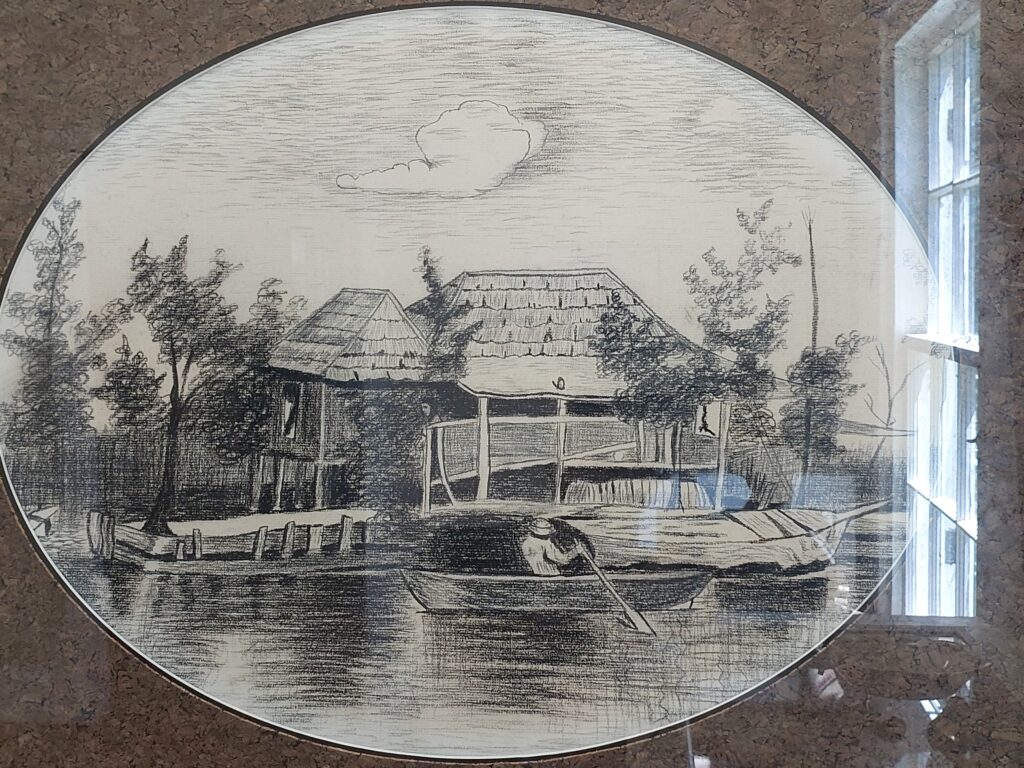Galleon trade sailors as first Filipino settlers in the United States

This is an illustration of the habitat/platform on stilts of the Manila Village along the river.
One of the first Filipino settlers in the United States were seafaring people who arrived as sailors and navigators on board Spanish ships during the Galleon trade.
Manila galleon trade refers to the trade route between Acapulco and Manila that was operational from 1565 to 1815.
The Spanish trading ships linked the Spanish Crown’s Viceroyalty of New Spain, based in Mexico City, with its Asian territories, collectively known as the Spanish East Indies, across the Pacific Ocean.
READ MORE:
Execution bond removed in the Magna Carta of Filipino Seafarers
Marcos urged to sign new Magna Carta for Seafarers bill
‘Red-tagging’ is a threat to people’s life, liberty, and security
Many indios of Filipino and Southeast Asian origin made up the majority of the crew while other crew were deportees and criminals from Spain and the colonies. Many criminals were sentenced to serve as crew on royal ships.
The journey was interminable, the sea was unruly, the food infested.
Mortality rates were high with a majority of the crew often dead from starvation, disease and scurvy.
Infectious diseases resulted due to severe crowding in the ships such as typhus (known as ‘ship fever’) and typhoid (a disease spread by fleas and ticks).
Philippines and Louisiana were then under Spanish colonial government in Mexico.
According to the Honorary Consul of the Philippines Robert Romero, some of the Filipino sailors jumped off the ship to escape the harsh, violent and abusive working conditions. Some of them drowned, but those who survived stayed in the swamps of Louisiana, particularly Malo in St. Bernard Parish in 1763.
READ MORE:
Cyberlibel as legal threat to media practitioners
The village was a harsh place, storm-prone and mosquito-infested. It was isolated and undesirable. However, these traits made it a perfect place to hide from Spanish officials.
They would also later establish the Manila Village settlement in Barataria Bay, in Jefferson Parish in the mid-19th century.
The newly liberated sailors became fishermen who caught and dried shrimp for export to Asia, Canada, South America, and Central America.
Part shrimp processing plant and town, the facilities housed workers and their families in cottages around the edges of large shrimp-drying platforms. These “stilt villages” comprised living structures that were raised completely above the ground, about ten feet high and resembled traditional huts in the Philippines. They used wire netting to keep out reptiles, insects, and other creatures. They stuffed their mattresses with dried Spanish moss.
They would perform ancient Chinese rituals of “dancing the shrimp,” a method for removing the heads and shells from dried shrimp. They then danced and stomped on piles of shrimp in a circular motion often accompanied by guitar.
The employed an innovative method at that time to store the shrimp before the days of refrigeration without the need to keep it on ice. It created a whole new market and let people from outside the gulf coast experience the seafood.
Filipinos thrived in the industry and helped make Manila Village a symbol of the growing Filipino presence in the region.
On July 24, 1870, the Spanish-speaking residents of St. Malo founded the first Filipino social club, called Sociedad de Beneficencia de los Hispano Filipinos, to provide relief and support for the group’s members, including the purchasing of burial places for their deceased.
Filipinos also fought in the Battle of New Orleans in 1815 and the War of 1812.
The settlements were eventually destroyed by hurricanes: Saint Malo by the 1915 New Orleans hurricane and Manila Village by Hurricane Betsy in 1965.
By 2016, only a small remnant of Manila island, about one acre in size, remained.
By 2021, the island stopped being visible during high tide, and as of 2024 is no longer visible during low tide.
Tim Kerner Jr., the incumbent mayor of Lafitte, is a descendant of one of Manila Men, his great great grandfather is John Rojas who founded Clark Cheniere or Clarksville around 1860.
There were historical markers erected acknowledging the role of the Manila Men in Filipino-American history: one in St. Malo, now standing inside the Los Islenos Museum Complex at Saint Bernard Parish and another in Manila Plaza in Jefferson Parish, located in front of Jean Lafitte Town Hall.
“They were brave pioneers who ventured out into the murky waters, for a fresh start. Their hard work and industrious nature laid the foundation for the modern day shrimp industry, and made a lasting impact on the culture of Louisiana,” Kerner said.
There are plans to create a replica of Manila Village along the nature trail in Lafitte.
(Atty. Dennis R. Gorecho heads the seafarers’ division of the Sapalo Velez Bundang Bulilan law offices. For comments, please email info@sapalovelez.com, or call 09175025808 or 09088665786)
Disclaimer: The comments uploaded on this site do not necessarily represent or reflect the views of management and owner of Cebudailynews. We reserve the right to exclude comments that we deem to be inconsistent with our editorial standards.
